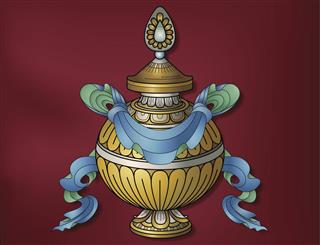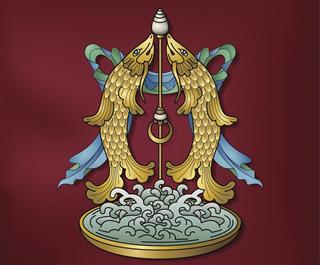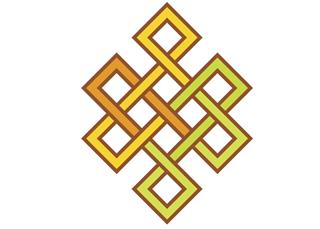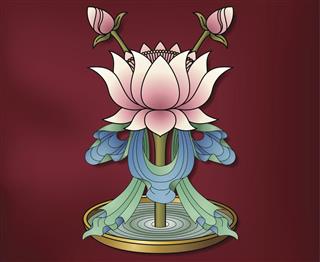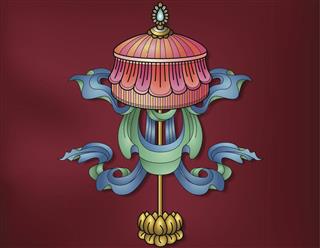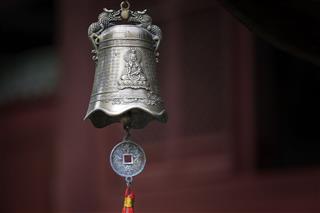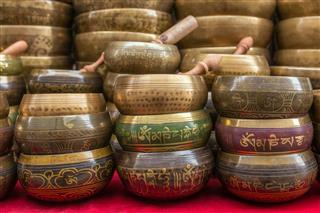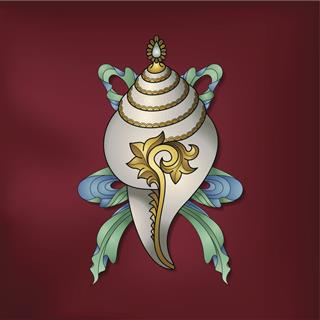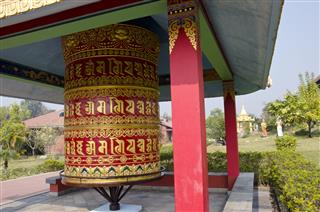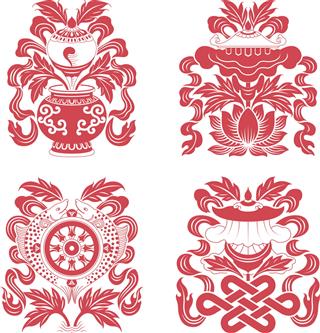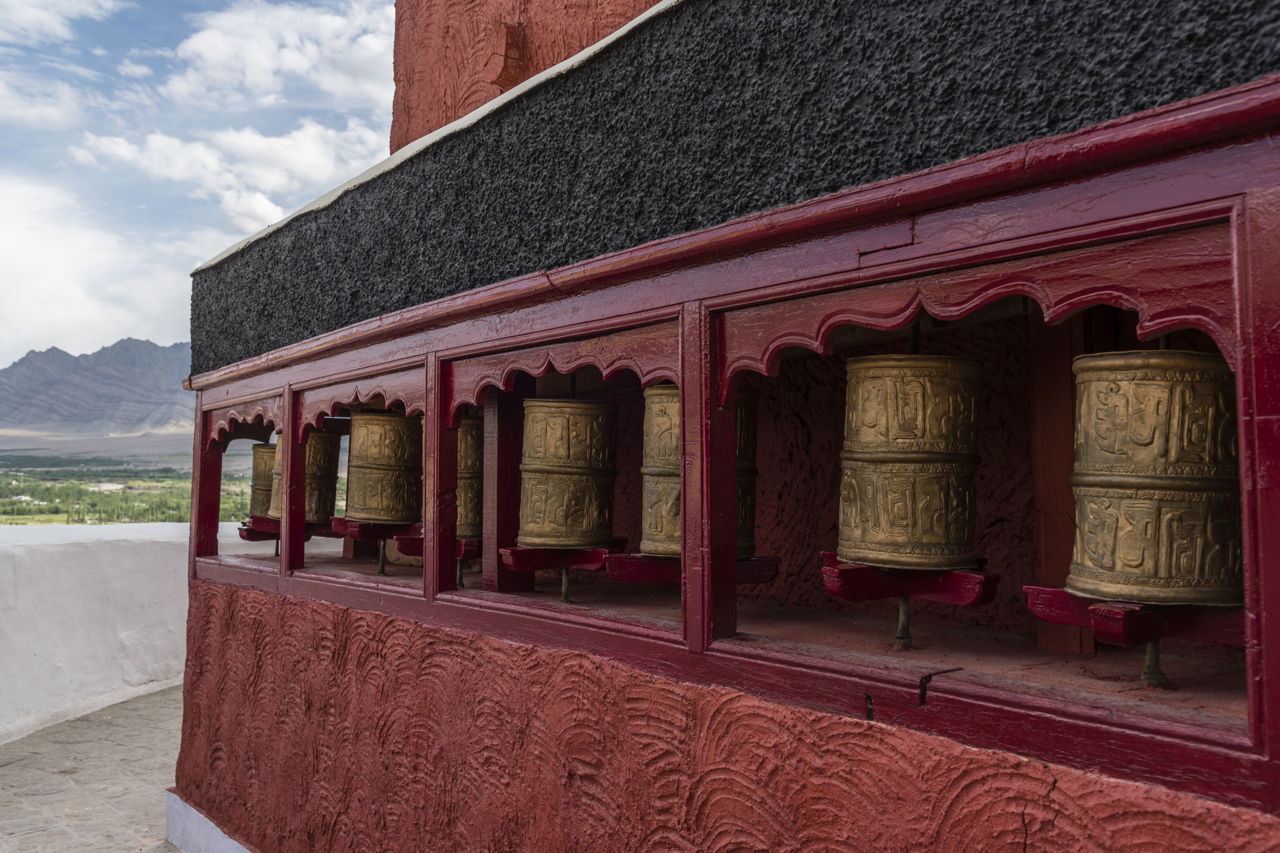
Religious symbols are much more than just sacrosanct adornments. They stand for cultural heritage, traditions, as well as represent ideologies of a religion. In this SpiritualRay article, we discuss the auspicious eight symbols of Tibetan Buddhism and what they symbolize.
The land of Tibet, known as the ‘Roof of the world’, is a beautiful place, rich with traditions, art and symbology. Tibetan symbols are largely influenced by Buddhism, which has extensive religious symbology, that represents the abstract ideas that hold center stage in their view of the world.
Eight Tibetan Symbols and Motifs
There are eight main symbols and motifs that are representations of Tibetan Buddhist beliefs. In the land of the Dalai Lama, these symbols can be seen carved and painted in many places. They have their origins in Buddhist teachings that spread to Tibet from India via Buddha’s disciples and monks. These symbols represent the main pillars of Buddhist philosophy. A picture or a symbol says more than just words. Words may be forgotten but symbols live on as representatives of the philosophy they once represented. The monks of Tibet liked to surround themselves with carving and paintings of the Buddhist beliefs and representations of teachings of the Buddha. Here are the eight most auspicious Tibetan Buddhist symbols (known as the Ashtamangala) with their meanings.
| Chhatra (Umbrella) The Tibetan Buddhist symbol of wisdom and spiritual power is the Chattra or umbrella. It also symbolizes honor and respect for the Buddha. It represents the cool shade that can be found in the teachings of Buddha which can act as a shield against suffering and defilement. Octagonal umbrellas represent the noble eightfold path to salvation showed by Buddha. It is the Tibetan symbol for strength and power to be found in the knowledge of Buddha’s teachings. |
| Dharmachakra (Wheel) The Dharmachakra or the eight-spoke wheel of righteousness symbolizes the teachings of Buddha. Tibetans call this symbol ‘chos kyi’khor lo’ or the ‘Wheel of transformation’. It is a representation of the change in human nature that is brought about by following the teachings of Buddha. The eight spokes represent the eightfold path. The center of the wheel represents the core of Buddha’s teachings, the spokes are wisdom and the circle engulfing it is the power of concentration which is one of the most potent forces of spiritual transformation. The wheel is also representative of the cycles of birth and death; liberation from which is only possible if through following of Buddha’s teachings. |
| Dhvaja (Victory Banner)
The victory banner or ‘Dhvaja’ is the symbol of victory over the demons of the mind (passion, lust, death and emotional defilement) on the path to enlightenment. It represents the victory over ignorance that Buddha achieved through his penance. Thus the victory banners are prime symbols and motifs, which point towards Buddha’s enlightenment. |
| Sankha (Sacred Conch Shell) The sacred conch shell or Sankha represents the fame of Buddha’s philosophy which spreads far and wide like the deep sound of the conch. It is used in Tibetan Buddhist ceremonies and is a representation of the truth that Buddha proclaimed to the world. |
| Padma (Lotus Flower)
The lotus is a symbol of spiritual growth of a person following the teachings of the Buddha and trading his eightfold path. Just as the lotus grows in soil and then rises above it, a man grows out of the mire of materialism to achieve enlightenment based on Buddha’s teachings. The red lotus is also the Tibetan symbol for love, compassion, and purity. The white lotus is the Tibetan symbol for peace and spiritual enlightenment. |
| Shrivasta (The Endless Knot)
The Shrivasta is one of the most intriguing of symbols. It is closed, geometrical, right angled loop which has no starting or endpoint. It represents Buddha’s infinite wisdom. It is also representative of the fabric of life and karma through which all our fates are intertwined. Being symbolic of the fact that everything is connected with everything else in this universe, it is the Tibetan symbol for harmony. |
| Suvarnamatsya (Golden Fish) The golden fish occur in pairs facing each other. The fish are representations of joy and fertility, along with abundance. They represent the philosophy that a man who follows Buddha’s teaching need not drown in an ocean of suffering but swim freely like the fish. They also are symbolic of the eyes of Buddha watching over his disciples. |
| Kalasha (Sacred Vase)
The Kalasha or sacred vase is symbolic of inexhaustible riches that are the Buddhist teachings. It represents spiritual abundance, prosperity, wealth, and long life. The flat bellied vase also carries a lot of importance in Hindu system of beliefs. |
So, these were some core symbols and motifs associated with Tibetan Buddhism that adorn various structures throughout Tibet including monasteries. A study of this symbology can lead to a deep understanding of the beliefs and teachings of Buddha himself.
